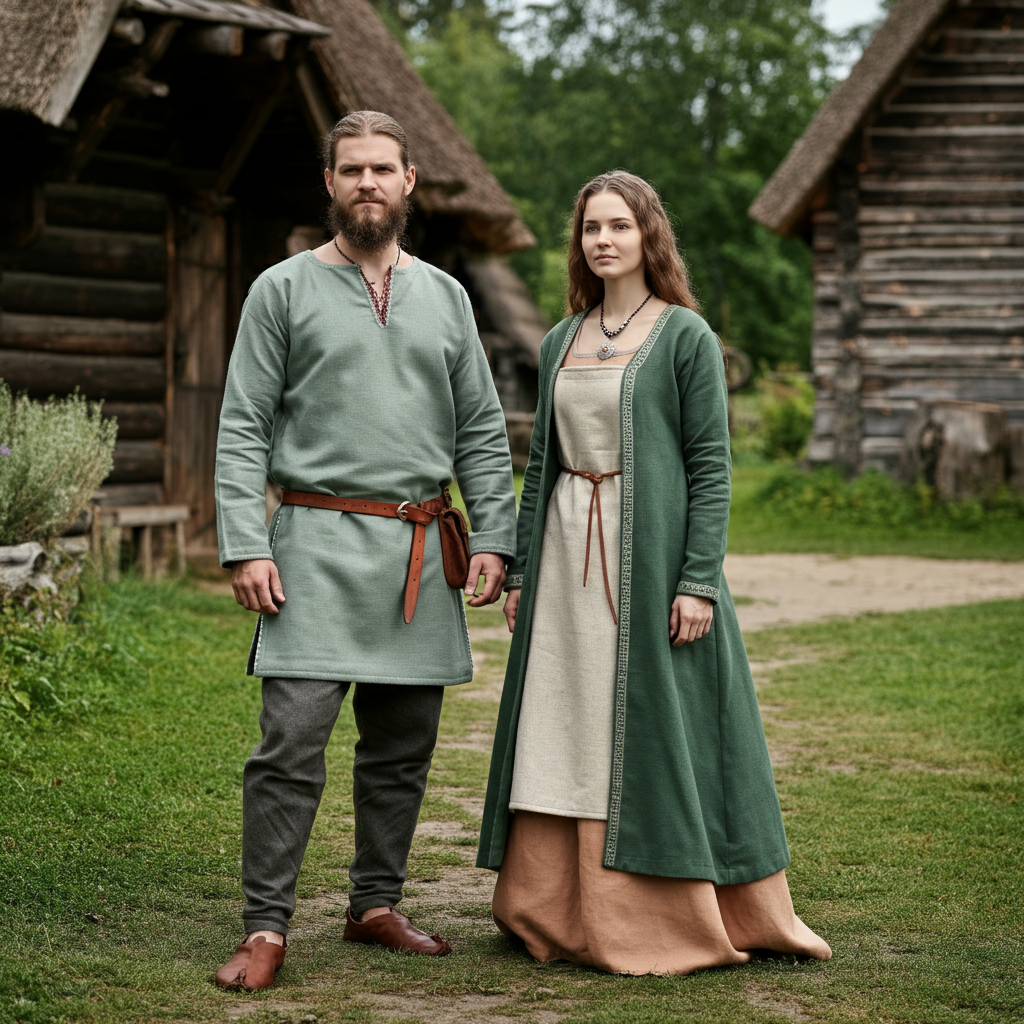
Introduction
The Anglo-Saxons, a Germanic people who settled in Britain from the 5th to the 11th century, left a significant cultural and historical legacy. One fascinating aspect of their legacy is their fashion, which provides a window into their daily lives, social structures, and artistic sensibilities. Anglo Saxon fashion and style were practical yet expressive of identity and status, shaped by their resources, climate, and interactions with other cultures.
This blog explores the intricacies of Anglo Saxon fashion, from what they wore to how they presented themselves physically. We’ll cover everything you need to know about their clothing, style, colors, and physical appearance.
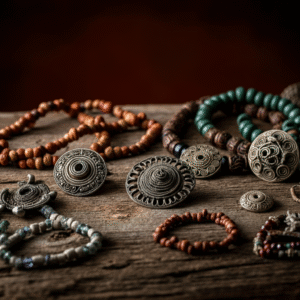
What Did Anglo-Saxon People Wear?
The everyday wardrobe of the Anglo-Saxons was deeply functional, designed to endure labor-intensive lifestyles while offering comfort and modest protection against the elements. Clothing also varied according to social status, gender, and age.
What Did the Anglo-Saxons Wear?
Men typically wore tunics made from wool or linen, depending on the season and availability of resources. These tunics reached just above the knees and were often paired with woolen or linen trousers and fastened with belts. Over this, they sometimes wore cloaks, particularly during colder months. Women, on the other hand, wore long dresses that were simple in design but could be layered with additional garments, such as aprons or mantles, for warmth and decor.
Both men and women adorned themselves with simple accessories, like leather belts, brooches, and beads, which could showcase social status. Wealthier individuals often had garments decorated with embroidery or made from finer cloth, while the poor wore coarser and plainer fabrics.
Did Anglo Saxons fashion Wear Capes?
Yes, cloaks and capes were staple items of outerwear, especially during colder months. These garments were fastened at the shoulder or chest using a brooch or pin. Cloaks could also serve as blankets for additional warmth and were practical for laboring outdoors. While most cloaks were simple in design, nobles might wear capes edged with decorative trim.
What Did Anglo-Saxon People Look Like?
The physical appearance of Anglo Saxon fashion reflected their Germanic origins, but environmental factors likely shaped their features over time. They were of average height for their time, with men standing around 5’7” and women slightly shorter at around 5’2”. Their bone structure suggests they were strong and sturdy, likely a result of their active agricultural and war-centered lifestyles.
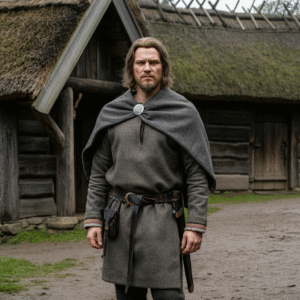
What Color Eyes Did Saxons Have?
Historical evidence suggests that light-colored eyes, such as blue, green, or hazel, were common among the Anglo Saxon fashion. This aligns with their northern European ancestry. However, modern studies have shown that darker eye colors were also present due to genetic diversity introduced through interactions with other populations.
What Did Anglo-Saxons’ Hair Look Like?
Anglo-Saxon hairstyles varied widely depending on gender and status. Men often kept their hair relatively short but not cropped, while warriors sometimes grew longer hair as a sign of masculinity and strength. Beards and mustaches were common among men, with some styles influenced by trends from Scandinavia and bordering regions.
Women’s hairstyles were often longer than men’s and typically styled in braids or secured with hairpins. Wealthier women used more elaborate hair accessories, such as combs made from bone or antler, to demonstrate their status.
What Is Anglo-Saxon Style?
Anglo Saxon fashion style was not limited to clothing; it also reflected their broader cultural identity through art, design, and self-expression.
What Is an Anglo-Saxon Look Like?
The “Anglo Saxon fashion look” is distinguished by practicality and understated elegance. Their garments embodied functionality but often included intricate details, such as embroidery or decorative stitching, showcasing their artistry. Their overall appearance was shaped by their resourceful use of available materials and their preference for modest yet expressive attire.
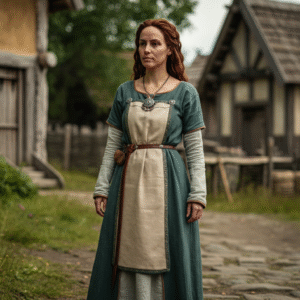
How to Dress Like an Anglo-Saxon?
To recreate Anglo Saxon fashion, begin with basic tunics or dresses made from natural fibers like wool or linen. Opt for simple construction, such as sleeveless designs for warmer weather or long-sleeved garments for colder months. Incorporate accessories like leather belts, brooches, or beaded necklaces to add authenticity. For outerwear, consider a woolen cape or cloak.
Footwear would consist of leather shoes, secured with straps. Lastly, aim for earthy tones mimicking natural dyes, like browns, greens, and yellows.
What Was the Anglo-Saxon Art Style?
Anglo-Saxon art was heavily influenced by their Germanic roots and later by Christianity. Their art style was characterized by detailed patterns, including intertwined animals, geometric shapes, and organic motifs. This intricate design aesthetic often extended to their clothing, which could feature embroidered borders or patterns inspired by textiles or metalwork.
What Is Anglo-Saxon Culture Like?
The heart of Anglo Saxon fashion culture was community-oriented and deeply hierarchical. This social framework extended to their clothing, meaning wealthier individuals could afford more luxurious materials and embellishments, while others wore simpler attire. Anglo-Saxon garments were both practical and symbolic, with certain styles or accessories denoting rank or accomplishments.
What Makes a Person an Anglo-Saxon?
Being Anglo-Saxon involved more than ethnicity; it encompassed values, traditions, and a shared sense of identity rooted in language, religion, and way of life. Clothing often served as a visual marker of their distinct cultural identity, making it an integral part of their civilization.
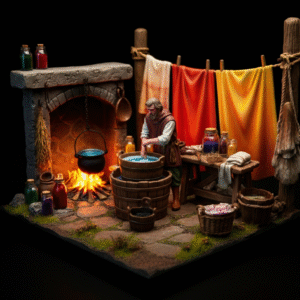
How Did Anglo-Saxons Dress?
Overall, Anglo Saxon fashion dress was modest and utilitarian. While common folk crafted their clothing from readily available materials, elites imported fabrics and dyes from neighboring regions. They embraced layering to adapt to the climate and incorporated adornments to signify wealth or rank.
What Were the Colors of the Anglo-Saxons’ Clothing?
Anglo Saxon fashion’s clothing was neither dull nor excessively colorful. Their use of dyes allowed for a variety of hues, though the shades often reflected their available resources and classes.
What Colors Did Anglo-Saxons Wear?
Common colors included earthy tones such as browns, greens, and yellows, derived from plants like wood, weld, and madder. White and gray were also common, as they required minimal processing. Wealthier individuals could access more vibrant colors like purples and blues, which were expensive to produce.
What Are the Colors of Saxon?
The colors associated with Saxon identity, particularly in art and attire, tend to include natural and muted shades. These colors reflected their environment and were practical for their lifestyles, though brighter hues appeared in special contexts, like religious ceremonies or noble attire.
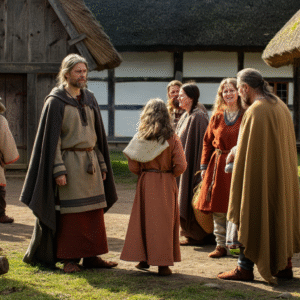
What Would Anglo-Saxons Wear?
Garments were dyed using natural ingredients, with some of the most popular dyes being woad (blue), madder (red), and weld (yellow). By combining these dyes, Anglo-Saxons could create a wider palette, including greens and purples. The fabric’s saturation indicated the wearer’s wealth, as darker, more vibrant hues required repeat dyeing and thus greater expense.
What Did Anglo-Saxons Dye Their Clothes With?
Anglo-Saxons mastered the use of natural pigments. For example, they extracted blue from the woad plant, yellows from weld, and reds from madder roots. These dyes were boiled and applied to fabrics, creating long-lasting colors.
Did Saxons Have Blue Eyes?
Yes, many Anglo-Saxons likely had blue eyes, consistent with genetic studies of northern European populations. However, this trait would have been mixed with other eye colors over time due to trade, migration, and intermarriage.
What Skin Color Were the Anglo-Saxons?
The physical appearance of the Anglo-Saxons has been a topic of historical debate, but archeological research and genetic studies provide some key insights.
What Is the Anglo-Saxon Skin Tone?
Anglo-Saxons were fair-skinned, reflecting their northern European heritage. This lighter complexion was one of their distinguishing features, though environmental factors might have caused variations in skin tone.
What Was the Physical Appearance of the Anglo-Saxons?
Their average physical features included light complexions, light or dark hair, and a mix of eye colors. Farming and physical labor gave many Anglo Saxon fashion strong physiques, while noble classes might have enjoyed a softer, less weathered appearance.
What Color Are Anglo-Saxons?
Skin color among the Anglo-Saxons was predominantly fair, but the diversity in physical appearances may have increased over centuries of cultural exchange.
Did Anglo-Saxons Have Facial Hair?
Many Anglo Saxon fashion men sported facial hair, including mustaches and beards, which were often well-kept and styled. Facial hair was popular among warriors, adding to their air of masculinity and strength.
What Percentage of English DNA Is Anglo-Saxon?
Recent genetic studies suggest that the average modern person in England inherits roughly 25-40% of their DNA from Anglo Saxon ancestors, reflecting the enduring legacy of this ancient people.
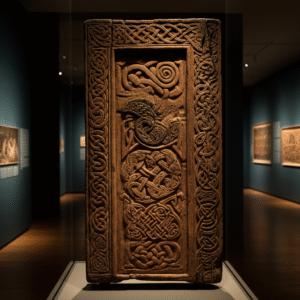
The Lasting Legacy of Anglo Saxon Fashion
Anglo Saxon fashion reflects not only their ingenuity and creativity but also their social structures, values, and interactions with the world around them. By examining their clothing, style, and physical appearance, we gain a richer understanding of how this remarkable culture defined and expressed itself.
Whether you’re fascinated by history, interested in re-creating their clothing, or simply curious about their culture, Anglo Saxon fashion remains a fascinating subject that bridges the ancient and modern worlds.





Leave a Reply